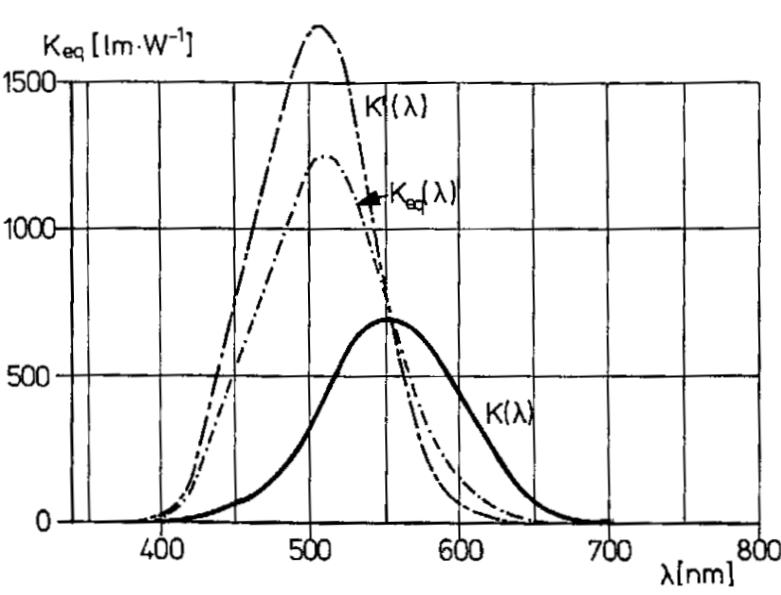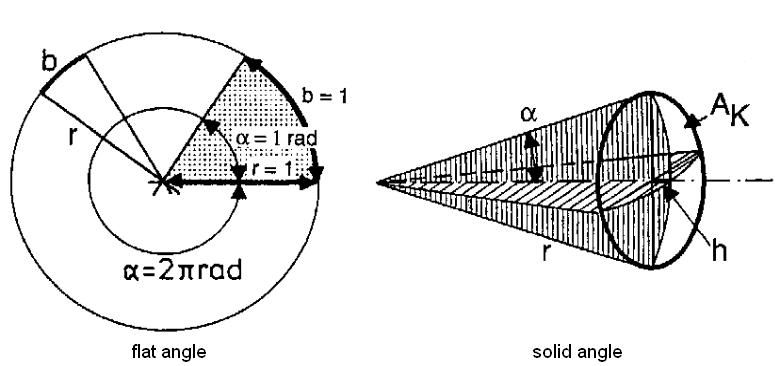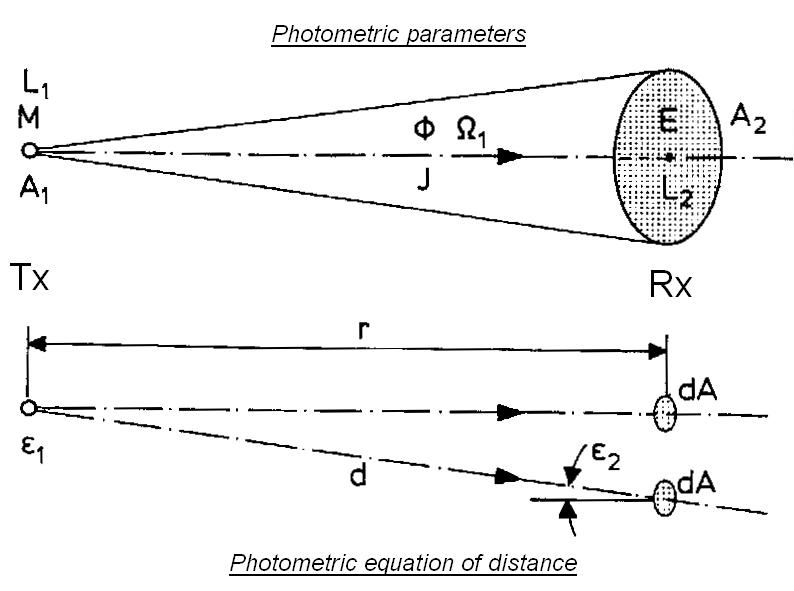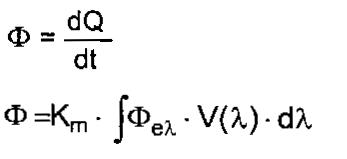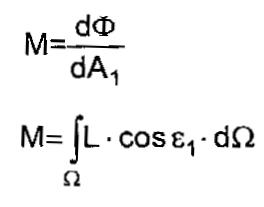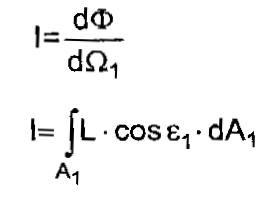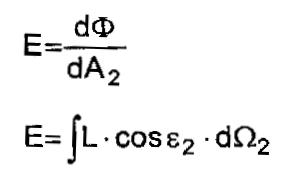Physical Parameters
General principles
The photometry is the science studying the luminous power, so it regards the radiant power by considering the human eye sensibility. The radiant power flux is defined like the quantity of power per unit of time and it is measured in watt [W], while the luminous power flux is a different unit that is measured in lumen [lm]. The main requirement is that the source has to be a point source, thus equally emitting in all directions.
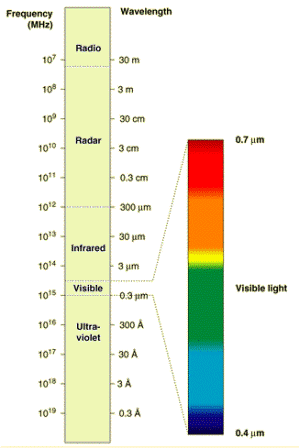
In a physical matter, the light is an electromagnetic radiation at wavelength = 380 … 780 nm. This range of wavelength is a part of the entire electromagnetic spectrum, as shown in the figure to the side.
The interested spread of optical radiations includes the visible portion (VIS) and the contiguous areas of ultraviolet radiations (UV) and infrared radiations (IR).
Of-fact, people does not see almost all the “light” of the electromagnetic spectrum, in addition the visible range = 380 … 780 nm is felt in different ways. This depends on the fact that each single people has a different sensibility at the different wavelengths, approximately described by the following curves:
.jpg)
The curve for the scotopic vision (sensibility in twilight conditions) is mainly due to rod receptors, while the photopic vision (in high illuminance conditions) includes the cone receptors. In addition, it exists the mesopic vision, as an intermediate case between the previous. The photopic sensibility curve has been adopted in photometry as spectral sensibility of the human retian, so as average answer function of the light sensor of which the eye is furnished.
![]() ) by means of the photometric magnitude according to the following relations:
) by means of the photometric magnitude according to the following relations:
where:
XV - lighting for the day view
X’V - lighting for the night view
Xe- physical radiation
Km - maximum value for the equivalent radiation for the day view
K’m- maximum value for the equivalent radiation for the night view
V(![]() ) - spectral luminous efficiency for the day view
) - spectral luminous efficiency for the day view
V’(![]() ) - spectral luminous efficiency for the night view
) - spectral luminous efficiency for the night view
Remembering that the spectral luminous efficiency detectable by the human eye is described by means of the relative spectral sensibility of the so-called “standard observer”, it is possible to identify 3 distinguished areas: photopic vison V(![]() ), mesopic vision Veq(
), mesopic vision Veq(![]() ), scotopic vision V’(
), scotopic vision V’(![]() ) for which the corresponding luminance values are:
) for which the corresponding luminance values are:
pure photopic vision → L > 102 cd*m-2 (potentially L > 101 cd*m-2)
mesopic vision → L = 10-2 cd*m-2
scotopic vision → L < 10-5 cd*m-2 (potentially L < 10-3 cd*m-2)
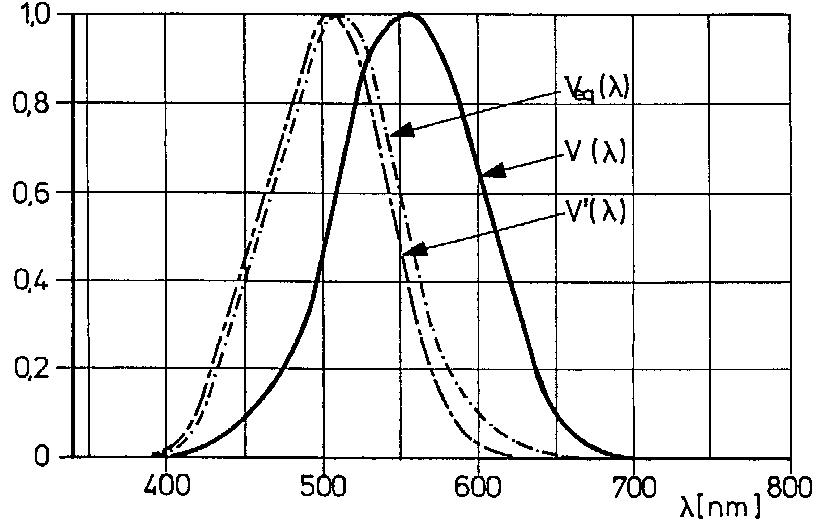
where in addition it is that:
for photopic vision → = 555 nm, Km = 683 lm * W-1
for mesopic vision → Km eq = 683/Veq(=555nm) lm * W-1
for scotopic vision → = 507 nm, e K’m = 1699 lm * W-1
From the above mentioned , the following functions are obtained:
for photopic vision
for mesopic vision
for scotopic vision
with the following behaviors:
Photometric parameters and units
With reference to the figure:
it is defined the flat angle as the ratio between the length of the arc b and the radius r of the circle, and it is measured by radiant [rad], so:
while the solid angle is defined as the ratio between the irradiated area AK and the square distance r of this area from the luminous source. The unit is the steradiant [sr] and furthermore:
That being so, considering the figure:
they are defined:
Quantity of light Q – it is the light radiation Qe weighed with the V(![]() ) function, it is measured by lumen * hour [lm*h] and that is
) function, it is measured by lumen * hour [lm*h] and that is
Flux – it is the ratio between the quantity of light Q and the time t, it is measured by lumen [lm] and that is
Emission of light M – it is the ratio between the emitted flux by a source and the source area, it is measured by lumen per square meter [lm/m2] and that is
Intensity I – it is defined as the luminous flux per unit of solid angle, it is measured by candela [cd] and that is
Luminance (or brillance) L – it is defined as the emitted luminous intensity per unit of area, it is measured by nit [nt=cd/m2] and that is
Illuminance E – it is the ratio between the luminous flux incident on an surface and the area of this illuminated surface A2, it is measured by lux [lx] and that is
In addition, with reference to the figure:
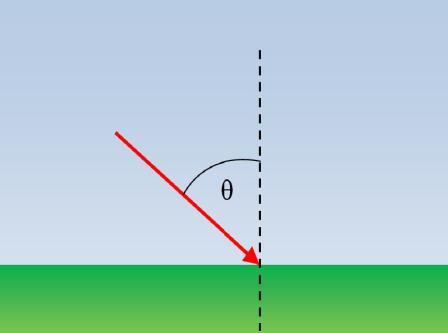
the angle of incidence is defined as the angle between a ray incident on a surface and the line perpendicular to the surface at the point of incidence.
The measurement is carried out following the figure below:
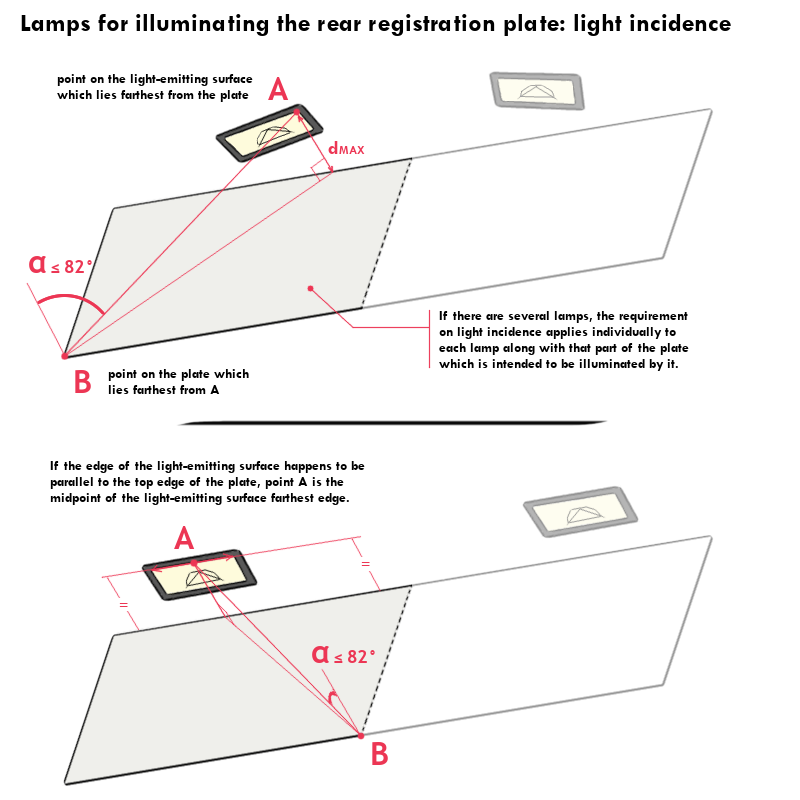
CIE Diagram
Because of the various colours are felt in different ways from the people, the International Commission on Illumination (CIE) has defined some standards that univocally identify a colour, regardless of who receives, through a triple stimulus.
In 1931 the CIE has elaborated the xyY colourimetric system that represents the colours according to their chromatic (axis x and y) and their luminance (axis Y). The chromatic diagram is obtained from mathematical transformation based on the periphery of pure colours, characterized by their wavelength.
.jpg) A fundamental photometric test is the measurement of the colour for emitted light, that must respect opportune limits on the CIE diagram. In the right side a graphical representation of these limits is given, identified as different areas (respectively for blue, white, amber and red) on the related chromatic diagram.
A fundamental photometric test is the measurement of the colour for emitted light, that must respect opportune limits on the CIE diagram. In the right side a graphical representation of these limits is given, identified as different areas (respectively for blue, white, amber and red) on the related chromatic diagram.








